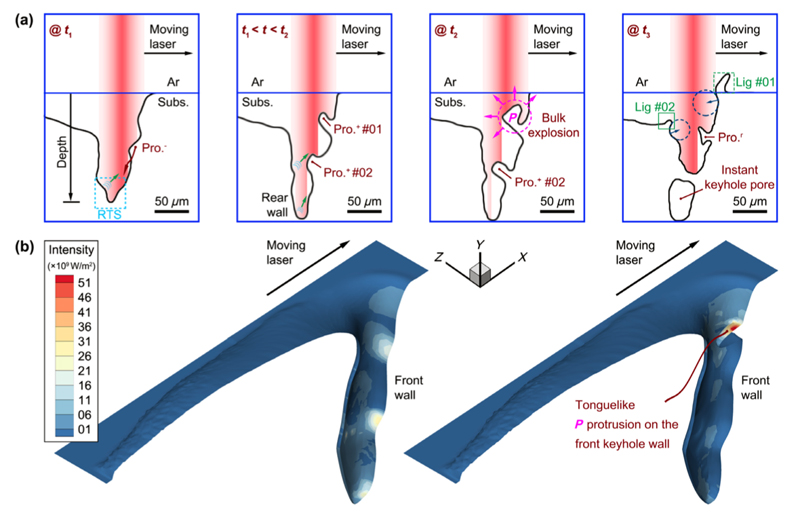| Laser-metal interaction: "bulk explosion inside a keyhole" (click for detailed info).
(a) Schematic illustrations of the sequential events that lead to melt ligamentation. At t1, a keyhole of reverse-triangle-like shape (RTS, marked using sky blue dashed rectangle) forms. The rear wall of this unique keyhole is directly exposed to the incident laser beam, and the generated vapor plume (olive green arrows) travels upwards towards the front keyhole wall. Upon impact, the existing protrusions (e.g., Pro. no. 01 and Pro. no. 02) transform from a dome shape slightly leaning downward (denoted by Pro−.) to a rod shape tilting upward (denoted by Pro+.).
At t2, a tonguelike protrusion (P) forms around the horizontal center of the keyhole with a minikeyhole on its top surface. The bulk explosion of the tonguelike protrusion (purple dashed circle and arrows) releases a mixture of gas and fine droplets. At t3, the high-momentum mixture reaches the rims of the keyhole. Simultaneously, the local curvatures (dark blue dashed circles) of the keyhole walls change, and thin melt ligaments (Lig, olive green dashed and solid rectangles) appear. After the explosion, the remains of P protrusion (Pror.) continue to flow down and quickly vanish. The last panel shows an instant keyhole pore.
(b) Simulation of laser absorption intensity with and without the tonguelike protrusion via ray tracing. (c) Keyhole depth as a function of time. Most local minima below a depth threshold correlate with the formation of reverse-triangle-like keyholes. The point marked by the sky blue dashed rectangle is the case shown here. |
